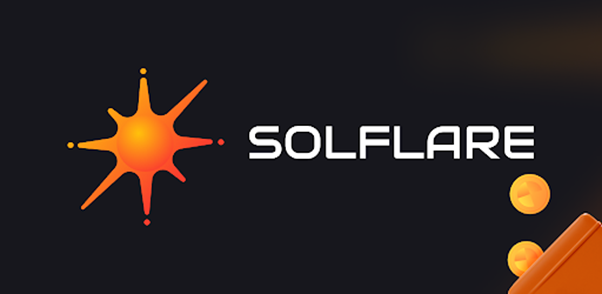Okay, so check this out—if you’re knee-deep in the Solana ecosystem, you’ve probably wrestled with the dilemma: how to keep your crypto both super secure and ready to earn through staking? It’s a weird balance, right? You want strong protection, like hardware wallets offer, but also the flexibility to participate in Solana’s fast-paced DeFi world without jumping through hoops. Wow! I didn’t expect staking Solana to feel this complicated at first.
My first impression was pretty straightforward: “Just pick any wallet that supports staking and call it a day.” But then, as I dug into the nuances of Ledger compatibility and advanced wallet features, things got a little trickier. You see, not all wallets that claim to support Ledger devices actually deliver a seamless experience, especially when it comes to staking SOL tokens. Hmm… something felt off about some popular options—too clunky or limited.
Initially, I thought staking was just about locking up tokens and collecting rewards. Actually, wait—let me rephrase that. Staking on Solana is also about managing your keys securely, delegating without risking your funds, and having clear on-chain visibility. These factors can make or break your crypto journey, especially if you’re not a hardcore developer.
Here’s where Solflare steps into the spotlight. The wallet’s robust integration with Ledger devices means you keep your private keys offline while still engaging fully with Solana’s staking ecosystem. On one hand, hardware wallets like Ledger are the gold standard for security. Though actually, many wallets don’t leverage this safely or intuitively for staking operations. Solflare nails it, providing an interface that feels both powerful and accessible—like a breath of fresh air in a crowded market.
But what really surprised me wasn’t just the Ledger support—it was how Solflare’s staking features make delegation straightforward without glossing over the complexities. For example, you can choose validators, track reward epochs, and even restake your earnings automatically, all while your keys remain protected by your Ledger Nano device. This is very very important if you ask me, because juggling security and convenience often feels like a tradeoff. Solflare proves it’s possible to have both.

Why Ledger Support Matters More Than You Think
Let me tell you—before I started using a Ledger with Solflare, I was a little skeptical about hardware wallets in general. They seemed bulky and overkill for everyday crypto users. But here’s the thing: when you’re staking Solana, every transaction you sign is a potential attack vector. If your private keys are online or in a hot wallet, the risk goes up dramatically.
Ledger devices keep your keys in a secure chip, isolated from your computer or browser. This means even if your PC gets compromised, your funds and staking rights remain locked tight. Seriously? Yeah, it’s that crucial. Solflare’s ability to seamlessly connect with Ledger means you don’t have to sacrifice user experience for security. That’s a rare combo.
Also, something else bugged me about other wallets: their staking dashboards often felt like an afterthought, with little transparency into validator performance or reward history. Solflare’s UI, on the other hand, offers clear insights into your stakes and validator stats, which helps you make smarter delegation choices. It’s like having a mini staking advisor built right in.
Oh, and by the way, if you want to get started or check it out yourself, the solflare wallet official site has all the info and downloads you need. I’ve bookmarked it for quick reference.
Staking Solana: The Smart Way with Solflare
Okay, here’s a quick story: I once tried staking SOL using a different wallet that supported Ledger, but the process was clunky—lots of extra steps, confusing prompts, and limited validator choices. It felt like the wallet was made by developers for developers, not everyday users.
Contrast that with Solflare. The flow feels intuitive from the get-go, guiding you gently through selecting validators and confirming delegations via Ledger. Plus, the wallet supports advanced features like multisig and token swaps, which means you can manage more than just SOL staking from one place.
Something else worth mentioning—Solflare updates frequently, which is a big deal in crypto because protocols evolve fast. The team behind it is pretty active in the Solana community, listening to feedback and pushing improvements. You get the sense that this wallet isn’t just a static tool; it’s part of a living ecosystem.
On the downside, I’m not 100% sure how beginner-friendly it is for people totally new to crypto. The onboarding could be smoother. But if you’re already somewhat savvy and want a secure, full-featured wallet with Ledger support, Solflare stands out.
Some Rough Edges and What They Mean for You
Here’s what bugs me about any staking wallet, including Solflare: there’s always a bit of a learning curve and some technical jargon that can trip you up. For example, understanding validator performance metrics and how rewards compound over epochs isn’t straightforward unless you’ve dive deep into Solana’s mechanics.
That said, Solflare does a better job than most at explaining these concepts in-app and via their support docs. Still, if you’re the type who just wants to “set it and forget it,” you might find the detail a bit overwhelming. But, hey, doesn’t that just reflect the reality of staking crypto securely?
Another minor quirk: sometimes the Ledger connection can be finicky, especially if your device firmware or app versions aren’t up to date. It’s not a dealbreaker, but it means you’ll have to keep your gear current and troubleshoot occasionally. That’s crypto life for ya.
Overall, though, the combination of Ledger support, staking capabilities, and user-centered design makes Solflare a top pick if you’re serious about Solana. Plus, the fact that it’s a non-custodial wallet means you’re always in control—no middlemen, no surprises.
Final Thoughts: Is Solflare Your Next Wallet?
So, after all that, what’s the takeaway? If you want to stake Solana without sacrificing security—and you happen to use or want to use a Ledger hardware wallet—Solflare is probably your best bet. It’s got the advanced features to satisfy crypto enthusiasts, but it also keeps things accessible enough for dedicated users who want serious control.
My instinct says more users should give it a shot, especially as Solana’s ecosystem keeps growing. The wallet isn’t perfect, but it’s evolving quickly and comes from a team that clearly knows the space. Honestly, if you’re juggling staking and security, this wallet could be a real time-saver and peace-of-mind provider.
Check it out at the solflare wallet official site—and maybe you’ll find it as surprisingly solid as I did.
